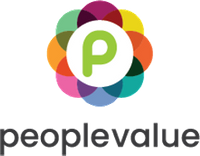The future of work: how to engage a dispersed workforce

It’s clear that we can expect a more flexible future post-Covid which will come with a rise in hybrid working. This increasingly popular approach gives employees more freedom over where they work. This results in workforces being largely dispersed with some employees based at home and others working from a central office or location.
This is a positive move in many ways. For years, flexible working has been praised for the greater work-life balance it offers as well as the benefits in terms of productivity and efficiency. The pandemic highlighted that it is possible for businesses to operate remotely on a large scale with little to no disruption. The big challenge that businesses face now though is maintaining and driving employee engagement with a dispersed workforce.
The new engagement challenge
Businesses have already had to adapt their practices to meet the ever-changing requirements of Covid, but now it’s time to establish long-term strategies that are suitable in the new world of work. With employees no longer having the same shared experience of going into the office or a central workplace every day, businesses will have to motivate, reward and connect with their employees in a different way. Here are our top tips for engaging a dispersed workforce:
Deliver frequent, creative communications
Communication has always been at the heart of employee engagement, but it has become even more significant and will continue to play a critical role as we settle into new working practices long-term. With many more employees working from home and having less face-to-face interactions with colleagues, it can become very easy for them to feel out of the loop and even miss communications. It’s therefore important to communicate regularly and utilise a range of channels to reach your employees.
In fact, employees working in different locations and relying heavily on technology to find out information means that businesses have a fantastic opportunity to be more creative with their communications. Ideally, you should try and deliver a consistent stream of useful and relevant information to your employees without bombarding their inbox.
Sometimes an email is exactly what is needed to get a message across, but if you rely on email communications too much, your employees might miss important messages. So, why not try different channels? You could share video messages, host a virtual meeting, post an update to your internal hub. Everyone likes to consume information and content in different ways, so a variety of channels will keep your communications interesting and engaging while targeting more of your people.
Help your employees socialise and feel connected
Thanks to technology, it’s very easy to stay connected with people from anywhere in the world. There is a difference between being connected and feeling connected though. While your employees might be sending messages via Teams and attending Zoom video calls, their emotional connection to your business and the relationships they have with their colleagues are the things that will have a huge impact on their engagement.
With that in mind, a key part of driving employee engagement is giving employees regular opportunities to connect with each other on a personal level, whether they’re working from home or on-site. Having a central platform that every employee can log into helps. An employee intranet or hub is almost like an online workplace in the sense that employees can check in, stay up to date with what’s happening in your business and interact with their colleagues. If you already have a platform in place, make sure that you’re regularly encouraging employees to access it in your internal communications.
Beyond this, you can facilitate interactions further by scheduling virtual meet-ups and events, designed specifically for informal, non-work-related chats. From casual catch ups over coffee to virtual wine tasting, there are plenty of things you can do to give your employees the opportunity to socialise. With many more businesses set to have dispersed workforces permanently, nurturing employees’ social wellbeing in this way will be a key part of maintaining engagement levels even after the pandemic.
Develop a culture of trust
With millions of people set to continue to work from home after restrictions have been lifted, it’s crucial that businesses establish a strong culture of trust in which employees are given greater freedom and control over their work. Trust has long been an essential ingredient for building productivity and engagement. In fact, Harvard researcher Paul J. Zak, found in his Neuroscience of Trust research that employees working in high trust companies report 74% less stress, 106% more energy at work, 50% high productivity, 13% fewer sick days, 76% more engagement, 29% more satisfaction with their lives and 40% less burnout.
Since the almost overnight shift to remote working that took place last year, businesses have had to put more trust in their employees because they have less visibility over what they’re doing. Business leaders and managers have had to adapt quickly and learn how to strike the right balance between overseeing and supporting their teams, while also letting them get on with their day-to-day tasks. When you get this balance right and show your employees that they’re trusted, they’ll be more likely to feel happy, loyal, committed and engaged at work.
Many different factors contribute to building a culture of trust, namely the relationship between managers and their teams. Besides that though, your internal communications are very important too. Over the past 12 months, businesses have opted for far more honest and authentic styles of communications, giving managers and business leaders the opportunity to express their emotions. This transparency is valued by employees and shows them that they’re part of a trusted team.
It’s also important to remember that trust goes both ways. Although saying “thank you” to your team is important, actions often speak louder than words. With a reward and recognition platform, you can regularly demonstrate your appreciation of your employees with points, vouchers or physical gifts, whether they work from home or on-site. These small gestures show your employees that you genuinely appreciate their efforts and will strengthen a culture of trust between senior leaders and the rest of your business.
Reinforce your culture, mission and values
Your business’ values, mission and culture connect your employees to a shared purpose. They add meaning and value to your employees’ individual jobs which drives motivation and engagement. Pre-Covid, many businesses relied on employees having the shared experience of coming into an office or central location to feel connected to their culture. But they can no longer rely on that. Instead, businesses need to bring their culture into the digital space and learn how to reinforce their mission and values in new ways that sustain their employees’ morale, motivation and engagement.
Rewards and recognition have played a critical role in driving employee engagement over the past year. As businesses establish long-term working practices, they will be a valuable tool to remind employees of their purpose and reinforce company culture. The types of actions, achievements and behaviours your business celebrates gives your employees a clear understanding of what your business values. In fact, many businesses integrate their values into their reward and recognition programmes because it gives them the opportunity to further reinforce their behavioural expectations. By doing this, instances of recognition are connected to a bigger picture and employees can see how their individual actions and efforts contribute to your business goals, no matter where they work.
Final thoughts
As we slowly move towards a new world of work, technology will continue to play an increasingly important role in helping businesses drive their long-term employee engagement strategies. Hybrid working comes with a range of benefits for businesses and their employees, but the key to making it work is adapting your practices to create a working environment, both online and offline, that fosters engagement.
This article is provided by peoplevalue ‘The Employee Engagement Company’.
Supplied by REBA Associate Member, peoplevalue – The Employee Engagement Company
We are a leading provider of employee reward&recognition, benefits delivery&wellbeing solutions.







